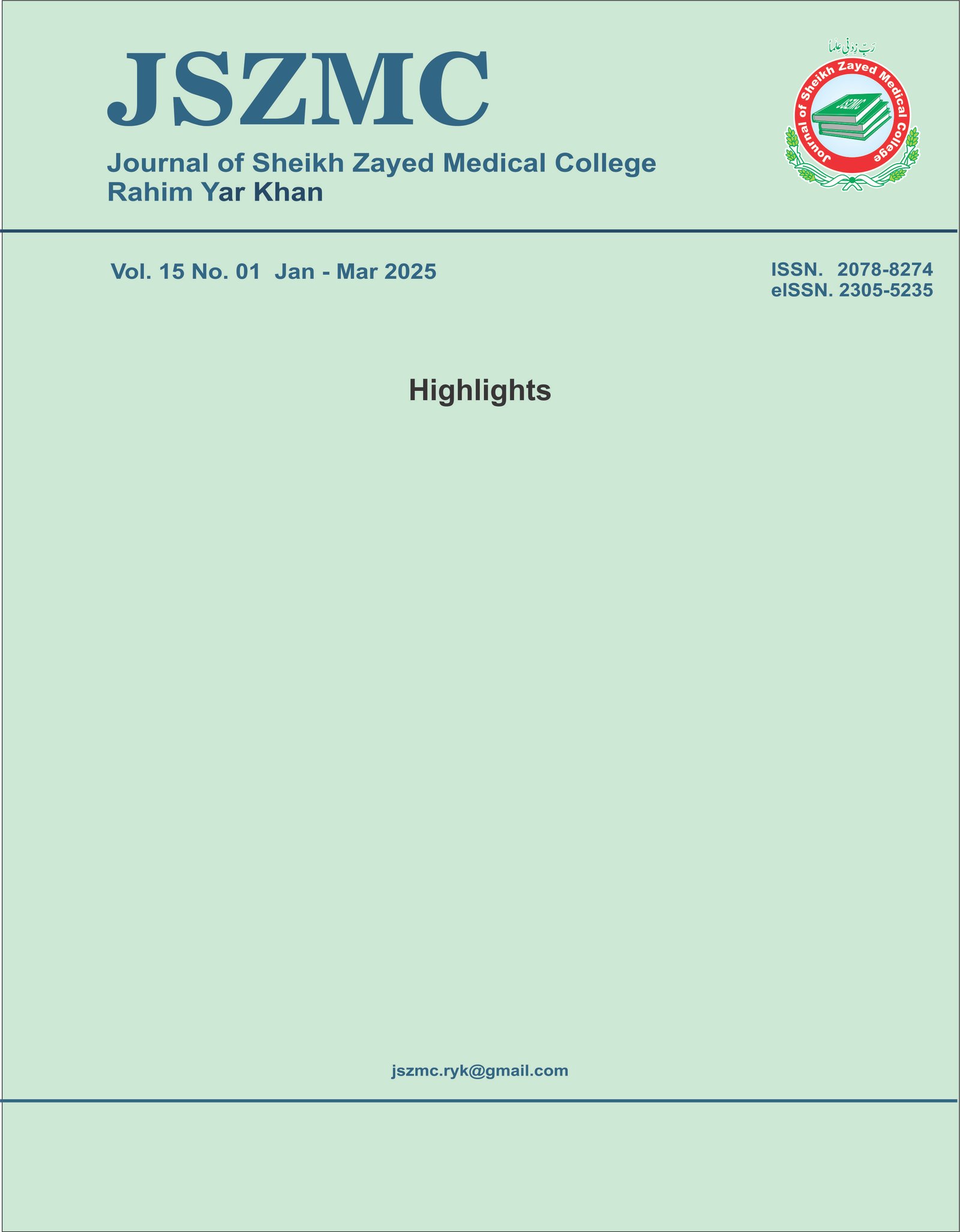Outcomes of Laparoscopic Cholecystectomy at a THQ Hospital Lahore
DOI:
https://doi.org/10.47883/jszmc.v15i01.273Keywords:
Laparoscopic cholecystectomy, outcome, cholecystitisAbstract
Background: Laparoscopic Cholecystectomy is frequently performed surgery with its own benefits and risks as compared to open cholecystectomy.
Objective: To evaluate the short-term outcomes of laparoscopic cholecystectomy performed at a Public Sector Hospital in Lahore, Pakistan.
Methodology: A retrospective analysis of 239 patients with gallbladder disease who underwent laparoscopic cholecystectomy between May 2021 and September 2023 at Government THQ Hospital Sabzazar was conducted. Procedures were performed by a single consultant surgeon using standardized techniques, including the triangle of safety methodology and a four-port approach. Data on demographic characteristics, operative details, and postoperative outcomes were collected and analyzed.
Results: Mean patient age was 46.8±8 years, with a female predominance (91.2%) with a male-to-female ratio 1:10). Mean BMI was 33.5±3.9 kg/m², and 88.28% had prior abdominal surgery. The most common indications for surgery were interval cholecystectomy (26.77%) and biliary colic (23.43%). Mean operative time, hospital stay, and drain duration were 57.06 ± 18.10 minutes, 2.01 ± 1.10 days, and 3.69 ± 2.34 days, respectively. No cases of biliary, vascular, or visceral injury, bile leak, surgical site infection, or mortality were observed. Overall complication rates ranged from 0.41% (port-site hemorrhage) to 9 (3.76%) (conversion to open cholecystectomy).
Conclusion: Adherence to standardized surgical protocols, including meticulous dissection, strict application of the triangle of safety methodology, and four-port technique, contributes to low complication rates and favorable short-term outcomes in laparoscopic cholecystectomy, even in resource-limited settings.


